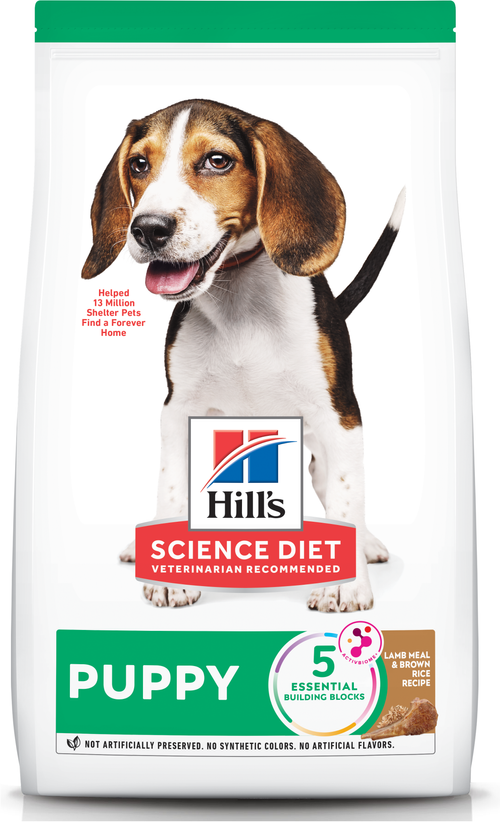
-
Find the right food for your petTake this quiz to see which food may be the best for your furry friend.Find the right food for your petTake this quiz to see which food may be the best for your furry friend.Featured products
 Puppy Large Breed Chicken & Brown Rice Recipe
Puppy Large Breed Chicken & Brown Rice RecipeVital nutrients to support 5 essential building blocks for lifelong health
Shop Now Puppy Lamb Meal & Brown Rice Recipe
Puppy Lamb Meal & Brown Rice RecipeVital nutrients to support 5 essential building blocks for lifelong health
Shop Now Hill's Science Diet Adult 7+ Senior Vitality Small & Mini Chicken & Rice Recipe Dog Food
Hill's Science Diet Adult 7+ Senior Vitality Small & Mini Chicken & Rice Recipe Dog FoodImproves everyday ability to get up & go
Shop NowFeatured products Adult Indoor Chicken Recipe Cat Food
Adult Indoor Chicken Recipe Cat FoodSupports energy level and beautiful fur in indoor cats
Shop Now Adult Sensitive Stomach & Skin Cat Food
Adult Sensitive Stomach & Skin Cat FoodHighly digestible food that is gentle on the stomach. Nourishes skin & promotes lustrous fur.
Shop Now Adult 7+ Chicken Recipe Cat Food
Adult 7+ Chicken Recipe Cat FoodSupports energy level and beautiful fur in mature cats
Shop Now -
Dog
- Dog Tips & Articles
-
Health Category
- Weight
- Food & Environmental Sensitivities
- Urinary
- Digestive
- Joint
- Kidney
-
Life Stage
- Puppy Nutrition
- Adult Nutrition
Cat- Cat Tips & Articles
-
Health Category
- Weight
- Skin & Food Sensitivities
- Urinary
- Digestive
- Kidney
-
Life Stage
- Adult Nutrition
Featured articles Pet Food Storage Tips
Pet Food Storage TipsDiscover how and where to store your dry, as well as canned, dog and cat food. Learn how to find the "best before" dates on all Hill's pet food packaging.
Read More The Incredible Science Behind Your Pet's Microbiome
The Incredible Science Behind Your Pet's MicrobiomeLearn what a pet's microbiome is, how it contributes to your pet's gut & overall health, and why nutrition is important in maintaining healthy microbiomes.
Read More Water
WaterDiscover why water is the most important nutrient for your dog or cat to live a healthy life. Find out how much water your pet should consume each day.
Read More -


The ear is divided into four parts:
- Pinna - the part outside the head
- External ear canal
- Middle ear - found on the inside of the eardrum
- Inner ear - consists of tubes and nerve structures that transmit sound to the brain. The inner ear also helps control your dog’s balance.
Ear inflammations are common in dogs and have many causes. Dogs, like bloodhounds, with droopy ears and/or a great deal of hair, like the English sheepdog, in the ear canal seem to have the most problems with ear inflammations. These characteristics plus the warm and enclosed nature of the ear canal provide an excellent environment for infectious agents that cause inflammation.
Causes
Bacteria, fungi and ear mites are common causes of ear inflammation in dogs. Allergies, seborrhea, an underactive thyroid gland, trauma, foreign objects (such as plant seeds) and tumors also cause ear inflammation.
Most cases of middle ear and inner ear inflammation are caused by bacteria that pass through a ruptured eardrum. One cause of a ruptured eardrum is overzealous cleaning of the ear canal. Throat infections may also cause middle ear inflammations.


Tasty Tips
Diagnosis by your Veterinarian
Examination of your dog’s ear canal and eardrum by your veterinarian with an instrument called an otoscope helps determine the cause. If the ear is very painful, your dog may need to be sedated for a thorough exam. Other tests include: microscopic examination of earwax; ear cultures; thyroid hormone studies; X-rays; surgical biopsy.
Most ear inflammations can be treated successfully once appropriate diagnostic tests are completed by your veterinarian.
Treatment and Home Care
Ear issues must be treated persistently and specifically, depending on the diagnosis. In some cases, treatment may need to be continued for six weeks or longer.
In most cases your veterinarian will need to clean your dog's ear and remove the hair from the ear canal before treatment will be effective. The use of medications to dry your dog’s ears can be helpful. More aggressive treatment, such as surgery, may be recommended for severe cases.
Home care usually includes administering medications directly into your dog’s ear canal according to your veterinarian’s instructions. Failure to properly administer ear preparations could lead to chronic inflammation, so be sure to follow your veterinarian’s recommendations.
Nutrition
If your dog has an ear issue, your veterinarian may suggest a change in your dog’s food. In some cases, your veterinarian may recommend a therapeutic hypoallergenic dog food to help limit exposure to potential allergens. Such dog foods may include Hill’s® Prescription Diet® brand dog foods.
Unless recommended otherwise by your veterinarian, gradually introduce any new dog food over a seven-day period. Learn how to transition your dog gradually to a new dog food.


One of our staff authors prepared this article for you
Related products

Improves Everyday Ability to Get Up & Go

Vital nutrients to support 5 essential building blocks for lifelong health

Vital nutrients to support 5 essential building blocks for lifelong health

Improves everyday ability to get up & go
Related articles

Discover fun and engaging games and other ways to help your dog exercise, keeping him happy and healthy.

Learn basic steps & precautions for treating a cut on your dog, including what you can put on the cut, and when you should take them to the vet.

Learn how to stop your dog from begging at the dinner table, and understand how it can help contribute to his health.

Understand the role that Omega-6 and Omega-3 fatty acids play in your dog's overall health, and how you can ensure they are getting enough.

Put your dog on a diet without them knowing
Our low calorie formula helps you control your dog's weight. It's packed with high-quality protein for building lean muscles, and made with purposeful ingredients for a flavorful, nutritious meal. Clinically proven antioxidants, Vitamin C+E, help promote a healthy immune system.
Put your dog on a diet without them knowing
Our low calorie formula helps you control your dog's weight. It's packed with high-quality protein for building lean muscles, and made with purposeful ingredients for a flavorful, nutritious meal. Clinically proven antioxidants, Vitamin C+E, help promote a healthy immune system.

